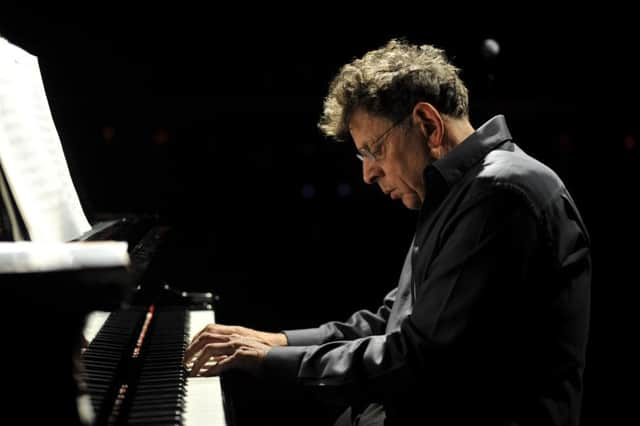Classical review: Philip Glass Ensemble, Glasgow


Philip Glass Ensemble: Music in 12 Parts - Royal Concert Hall, Glasgow
* * * *
In the end, the concert was delayed by 15 minutes to accommodate the last-minute demand to see the composer and his esteemed ensemble, who were saluted almost as rock stars for their dexterity, technical precision and, damn it, stamina.
Advertisement
Hide AdMusic in 12 Parts is a repetitive strain injury suite written between 1971 and 1974 for electric piano, woodwind and voice which adds up to three-and-a-half hours of utterly mesmeric and rhythmically sensitive music, arranged here into four quarters, with a “dinner break” in the middle.
Within its repetitive patterns, there are tiny intricacies which reward close listening but allotting three parts to each segment of the performance with only the briefest of inhalations between them slammed home the rigours of such taut repetition and, more blatantly, the impact of the sudden, almost shocking shifts in tempo, volume and style between each part.
So the pastoral poignancy of the flutes or Lisa Biewala’s soothing wordless vocals abruptly gave way to a hectic electric baroque barrage, with insistent, energising vocal trills, arpeggios which would not be out of place in progressive rock and feverish, undulating soprano saxophone.
A succession of dissonant droning chords became more of a competitive rabble which resolved into something rather majestic with the addition of stentorian male vocals. A suggestion of gothic horror, embellished by the curt honk of sax and babbling voice, moved into a lighter, almost blithe passage with fluttering flute and vocal crooning.
The performance was relayed continously to three big screens above the stage, including a rotating bird’s eye view which captured Glass’s hands moving with such repetitive exactitude that the aerial footage looked like it had been chopped and looped.
The cumulative effect was both hypnotic and invigorating, but also demanding and, over the course of the evening, lolling heads in the auditorium were alleviated with jumpers for pillows and discreet massages. Yet despite the lure of other Minimal festival events elsewhere in the building, the vast majority of the audience could not tear themselves away from this magnetic spectacle which culminated in an impish, demented, high-speed fairground ride blowout.